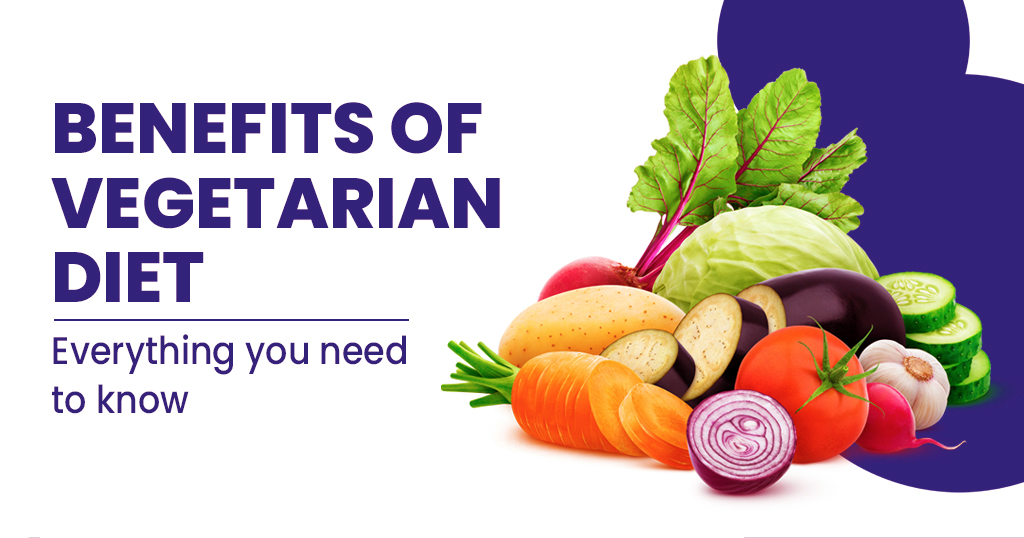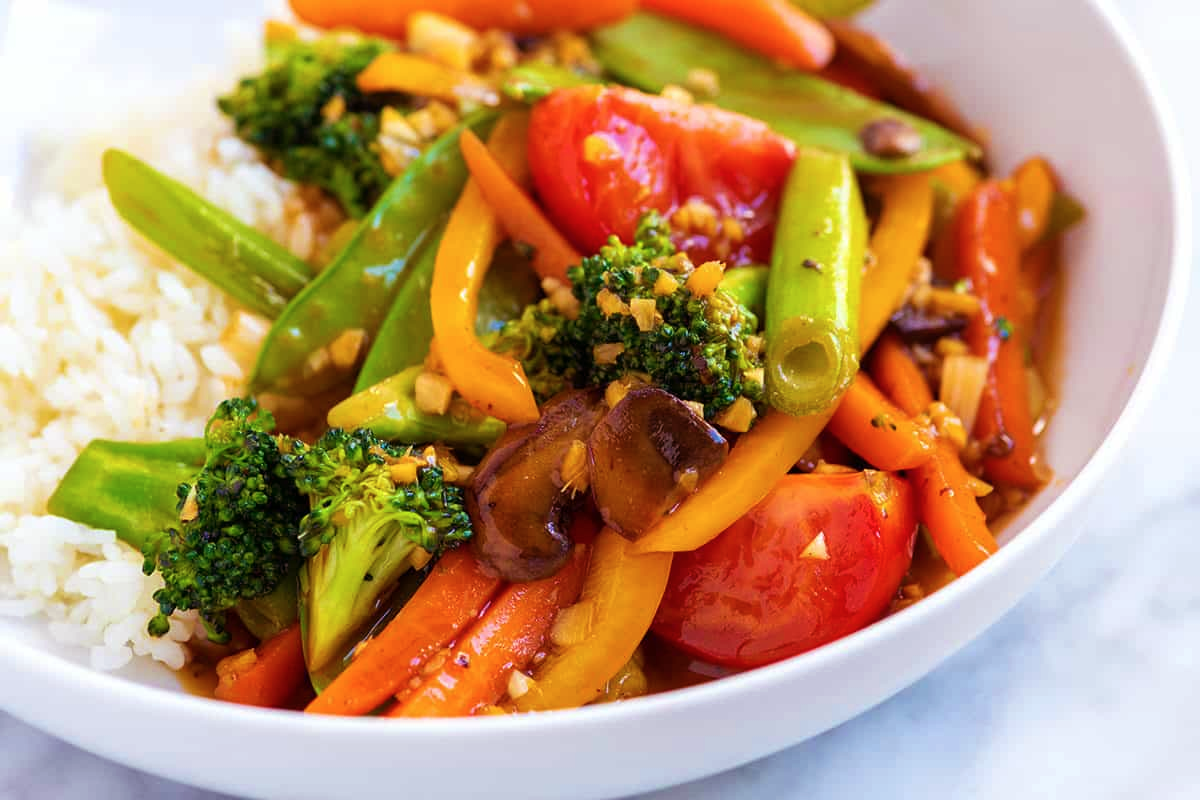Healthy Cooking
How to Cooking Whole Grains: Transform Your Health & Kitchen
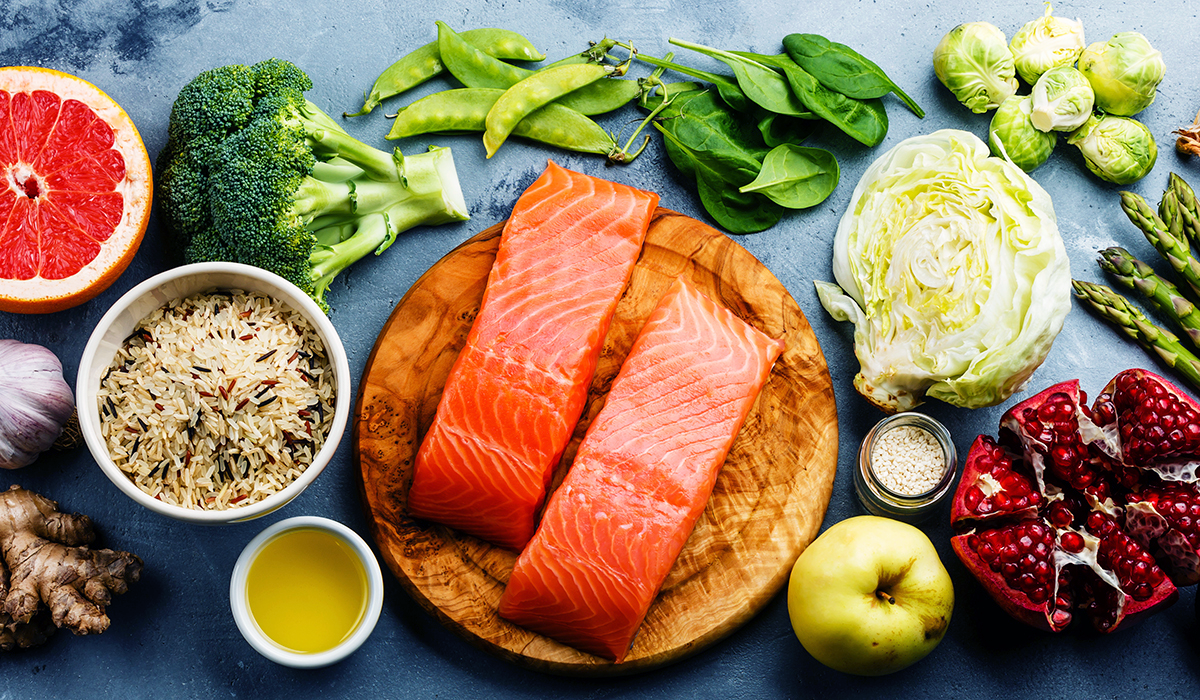
Why Whole Grains Matter in a Balanced Diet
When it comes to maintaining a healthy lifestyle, the importance of whole grains in a balanced diet cannot be overstated. Whole grains are nutrient-rich powerhouses that offer a myriad of benefits that contribute significantly to overall well-being. Unlike refined grains, whole grains retain all parts of the grain kernel, including the bran, germ, and endosperm, which means they are packed with essential nutrients such as fiber, vitamins, and minerals.
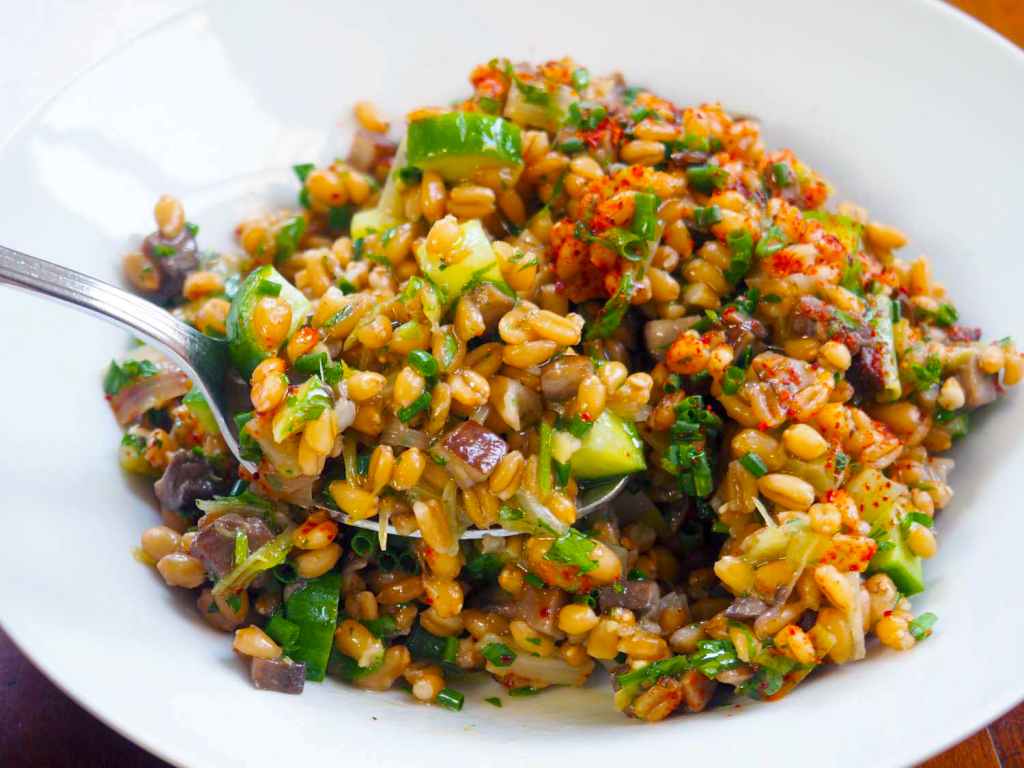
One of the key benefits of whole grains is their high fiber content. Fiber plays a crucial role in promoting digestive health by aiding in regular bowel movements and preventing constipation. Moreover, a diet rich in whole grains can help maintain healthy cholesterol levels and reduce the risk of heart disease. This makes incorporating whole grain foods like brown rice, quinoa, oats, and whole wheat bread into your meals an excellent choice for heart health.
Whole grains also provide sustained energy throughout the day due to their complex carbohydrates. Unlike simple carbs found in sugary snacks that cause rapid spikes and drops in blood sugar levels, whole grain foods release glucose more slowly into the bloodstream. This steady release helps maintain stable energy levels and keeps you feeling full longer—an important factor for weight management.
Adopting a whole grain diet contributes to balanced nutrition by supplying essential vitamins such as B vitamins (thiamin, riboflavin), which are vital for energy production and brain function. Minerals like iron (important for oxygen transport) and magnesium (crucial for muscle function) are also abundant in these nutrient-rich grains.
Incorporating more whole grains into your daily eating habits is easier than you might think. Start by substituting refined products with their whole grain counterparts—choose brown rice over white rice or opt for whole wheat pasta instead of regular pasta. Small changes can lead to significant improvements in your overall health.
Top Nutritional Benefits of Incorporating Whole Grains into Your Meals
Incorporating whole grains into your daily meals is one of the best decisions you can make for your health. Whole grains, unlike refined grains, retain all parts of the grain kernel, which means they are packed with high fiber content, essential vitamins and minerals, and powerful antioxidants.
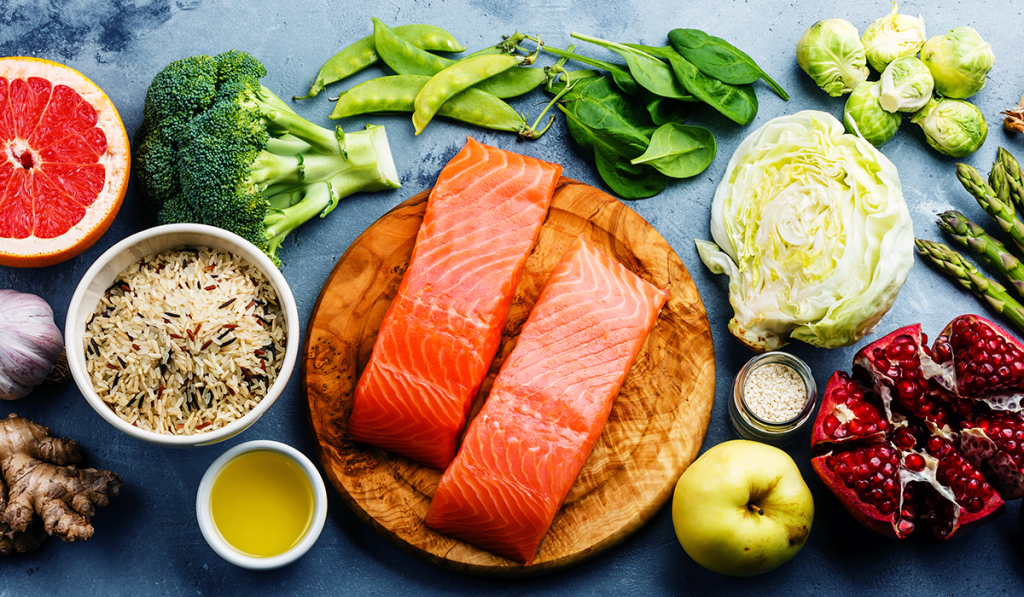
The high fiber content in whole grains plays a crucial role in promoting digestive health improvement. Fiber helps keep your digestive system running smoothly by preventing constipation and supporting a healthy gut microbiome. Additionally, it can aid in weight management by keeping you feeling fuller for longer periods.
Whole grains are also a rich source of essential vitamins and minerals such as B vitamins, iron, magnesium, and selenium. These nutrients are vital for energy production, immune function, and overall well-being. By incorporating whole grains like brown rice, quinoa, barley, or oats into your diet, you’re giving your body the nutrients it needs to thrive.
The antioxidants present in whole grains have been shown to combat oxidative stress and reduce inflammation in the body. This not only supports overall health but also provides significant heart health benefits. Studies have indicated that regular consumption of whole grains can lower cholesterol levels and reduce the risk of heart disease.
Making whole grains a staple in your meals is an easy yet effective way to boost your nutritional intake while reaping numerous health benefits. From enhancing digestive health to protecting your heart with antioxidants—whole grains offer a comprehensive package that supports long-term wellness. So next time you’re planning a meal or snack, remember to include these nutrient-dense powerhouses for optimal health benefits!
Whole Grains vs. Refined Grains: Understanding the Difference
When it comes to making healthier dietary choices, understanding the difference between whole grains and refined grains is crucial. Whole grains vs. refined grains is a topic that often sparks debate, but the nutritional comparison speaks for itself.

Whole grains, such as brown rice, quinoa, and oats, retain all parts of the grain kernel – the bran, germ, and endosperm. This means they are packed with essential nutrients like fiber, vitamins, and minerals. In contrast, refined grains undergo processing that strips away the bran and germ, leaving only the starchy endosperm. This process not only removes valuable nutrients but also diminishes their health benefits.
The disadvantages of processed grains are significant. They have a higher glycemic index which can lead to spikes in blood sugar levels and increased hunger shortly after eating. Over time, consuming too many refined grains can contribute to weight gain and increase the risk of chronic diseases such as type 2 diabetes and heart disease.
On the other hand, unrefined grain benefits are numerous. Whole grains support digestive health due to their high fiber content which helps regulate bowel movements and prevent constipation. They also aid in weight management by promoting a feeling of fullness longer after meals.
Incorporating more whole grains into your diet is a simple yet effective way to enhance your overall health. Next time you’re at the grocery store or planning your meals, remember: choosing whole over refined can make a world of difference for your well-being.
Diverse Whole Grain Options to Enhance Your Culinary Repertoire
When it comes to elevating your culinary repertoire, diverse whole grain options are an excellent place to start. Whole grains not only offer a plethora of health benefits but also bring a unique texture and flavor to your dishes. Let’s dive into some exciting ways you can incorporate these nutrient-rich grains into your meals.

Wheat berries are a fantastic addition to any kitchen. Their chewy texture and nutty flavor make them perfect for hearty salads or as a base for grain bowls. Try tossing cooked wheat berries with roasted vegetables, feta cheese, and a light vinaigrette for a satisfying meal.
Quinoa recipes have taken the culinary world by storm—and for good reason. This versatile grain is packed with protein and can be used in everything from breakfast bowls to savory main courses. Consider making a quinoa-stuffed bell pepper or adding it to soups for an extra nutritional punch.
Brown rice variety dishes are another great way to diversify your menu. Whether you’re making stir-fries, pilafs, or casseroles, brown rice adds depth and complexity to your recipes. Experiment with different types like Basmati or Jasmine brown rice for unique flavors that complement various cuisines.
Barley is often overlooked but deserves its moment in the spotlight. Its slightly chewy texture makes it ideal for both soups and salads. A classic barley soup with vegetables or a refreshing barley salad with herbs and lemon dressing can be both nourishing and delicious.
Let’s not forget about oats breakfast ideas that go beyond the traditional bowl of oatmeal. Overnight oats layered with fresh fruits, nuts, and seeds can make mornings something to look forward to. You can also bake oats into muffins or blend them into smoothies for quick yet wholesome options.
Incorporating these diverse whole grains—wheat berries, quinoa, brown rice varieties, barley, and oats—into your diet will not only enhance the nutritional value of your meals but also introduce you to new flavors and textures that will keep your culinary adventures exciting.
How to Easily Incorporate More Whole Grains into Your Daily Meals
Incorporating more whole grains into your daily meals is simpler than you might think. With a few strategic swaps and some creative meal planning with whole grains, you can elevate your diet effortlessly. Start by swapping refined grains for their whole counterparts; think brown rice instead of white, or whole-wheat pasta in place of regular pasta. These small changes can make a big difference in your overall health.
Easy whole grain recipes are abundant and delicious. Consider starting your day with a hearty bowl of oatmeal topped with fresh fruits and nuts, or enjoy a lunchtime quinoa salad packed with colorful veggies and a light vinaigrette. For dinner, experiment with barley or farro as the base for nourishing grain bowls.
Cooking tips for whole grains can also streamline the process. Pre-cook large batches of grains like bulgur or millet at the start of the week to have them readily available for quick meal assembly. Store them in airtight containers to maintain freshness throughout the week.
Healthy meal ideas don’t have to be complicated or time-consuming. By integrating these simple strategies into your routine, you’ll find that eating more whole grains becomes second nature—and your body will thank you for it!
The Long-term Health Impacts of Regularly Consuming Whole Grains
Whole grains have been heralded as a cornerstone of a healthy diet, and for good reason. The long-term health benefits of regularly consuming whole grains are profound and far-reaching. Numerous studies have shown that incorporating whole grains into your daily diet can significantly contribute to disease prevention with whole grains, offering a robust shield against various chronic conditions.
One of the most compelling advantages is the reduction in chronic disease risk. Whole grains are packed with essential nutrients, including fiber, vitamins, and minerals that work synergistically to improve overall health. Regular consumption has been linked to lower risks of heart disease, type 2 diabetes, and certain cancers. This isn’t just about adding years to your life; it’s about enhancing the quality of those years.
The connection between longevity and diet cannot be overstated. Diets rich in whole grains promote better digestive health due to their high fiber content, which aids in maintaining a healthy gut microbiome. This not only improves digestion but also boosts immune function and reduces inflammation—key factors in achieving long-term vitality.
Incorporating whole grains into your meals doesn’t have to be complicated or time-consuming. Simple swaps like choosing brown rice over white rice or opting for whole-grain bread instead of refined versions can make a significant difference in your health trajectory.
The evidence is clear: making whole grains a staple in your diet is an investment in your future well-being. By prioritizing these nutrient-dense foods now, you are setting yourself up for a healthier, longer life free from many common chronic diseases.
Conclusion: Embrace the Power of Whole Grains for a Healthier Lifestyle Today!
Incorporating whole grains into your daily diet is one of the simplest yet most effective ways to boost your overall health. Whole grains are packed with essential nutrients, including fiber, vitamins, and minerals that contribute to a well-rounded and nutritious diet. Not only do they help in maintaining a healthy weight, but they also play a crucial role in reducing the risk of chronic diseases such as heart disease, diabetes, and certain cancers.
Switching to whole grains doesn’t mean sacrificing taste or variety. From hearty oatmeal breakfasts to delicious quinoa salads and wholesome brown rice dishes, there are countless ways to enjoy these nutritional powerhouses. By making small changes like opting for whole grain bread over white bread or choosing brown rice instead of white rice, you can make significant strides toward better health.
Don’t wait any longer—embrace the power of whole grains today! Your body will thank you for it with improved energy levels, better digestion, and enhanced overall well-being. Make this simple yet impactful change in your diet now and experience the remarkable benefits that whole grains have to offer.
Healthy Cooking
10 Healthy Meals Prep Recipes for People Who Hate Salad
Eating healthy Meals doesn’t have to mean endless bowls of greens. This recipe collection is packed with flavor, variety, and creativity—perfect for anyone wanting to enjoy delicious, nutritious meals without a salad!
Description: A colorful filling bowl featuring quinoa, roasted rainbow veggies, and a zesty lemon-tahini dressing. This fiber-rich powerhouse is perfect for satisfying hunger while providing a balanced mix of protein, carbs, and healthy fats.
Key Ingredients: Quinoa, roasted bell peppers, zucchini, chickpeas, and tahini dressing.
Nutritional Information (Per Serving):
Calories: 400 | Protein: 15g | Carbs: 45g | Fat: 18g
Description: This vibrant stir-fry brings tofu, broccoli, and bell peppers in a flavorful ginger-soy sauce. Quick to make and perfect for a low-carb, protein-rich meal.
Key Ingredients: Firm tofu, broccoli, cauliflower rice, soy/ginger sauce.
Nutritional Information (Per Serving):
Calories: 350 | Protein: 20g | Carbs: 15g | Fat: 16g
Description: Mediterranean-style stuffed peppers brimming with lentils, quinoa, and feta, all baked in a rich tomato sauce. Gluten-free and protein-packed—the perfect warm and hearty meal.
Key Ingredients: Bell peppers, quinoa, lentils, feta cheese, tomato sauce.
Nutritional Information (Per Serving):
Calories: 400 | Protein: 18g | Carbs: 40g | Fat: 11g
Description: Spice up your routine with these tempeh tacos wrapped in crisp lettuce leaves and topped with fresh avocado and lime-cilantro slaw. A low-carb, guilt-free meal packed with bold flavors.
Key Ingredients: Tempeh, lettuce wraps, avocado, cabbage slaw, lime dressing.
Nutritional Information (Per Serving):
Calories: 320 | Protein: 16g | Carbs: 12g | Fat: 22g
Description: A light and refreshing low-carb pasta alternative made with zucchini noodles, fresh cherry tomatoes, and fragrant basil pesto, topped with pine nuts for added crunch.
Key Ingredients: Zucchini noodles, basil pesto, cherry tomatoes, pine nuts.
Nutritional Information (Per Serving):
Calories: 250 | Protein: 7g | Carbs: 10g | Fat: 21g
Description: Roasted spiced cauliflower served with a tangy harissa yogurt sauce and fresh Greek salad. This dish is a bold, flavorful nod to Mediterranean cuisine and is entirely gluten-free and low-carb.
Key Ingredients: Cauliflower, Greek yogurt, harissa, cucumber, cherry tomatoes.
Nutritional Information (Per Serving):
Calories: 300 | Protein: 10g | Carbs: 18g | Fat: 20g
Description: A hearty combination of roasted sweet potatoes, crispy chickpeas, and a creamy avocado-lime dressing. Perfectly balanced and loaded with plant-based nutrients to fuel your day.
Key Ingredients: Sweet potatoes, chickpeas, kale, avocado-lime dressing.
Nutritional Information (Per Serving):
Calories: 420 | Protein: 12g | Carbs: 50g | Fat: 16g
Description: Cozy up with this nourishing lentil and spinach soup, lightly spiced with turmeric, for added anti-inflammatory benefits. Perfect for meal prep and highly nutritious.
Key Ingredients: Lentils, fresh spinach, turmeric, vegetable broth, garlic.
Nutritional Information (Per Serving):
Calories: 280 | Protein: 19g | Carbs: 35g | Fat: 5g
Description: A delightful, gluten-free twist on eggplant Parmesan. This dish features a crunchy quinoa crust with marinara sauce and fresh arugula.
Key Ingredients: Eggplant, cooked quinoa, Parmesan cheese, marinara sauce.
Nutritional Information (Per Serving):
Calories: 380 | Protein: 18g | Carbs: 28g | Fat: 18g
Description: Crispy, golden quesadillas filled with creamy avocado and hearty black beans, served alongside fresh salsa and guacamole. An easy, satisfying addition to your meal prep.
Key Ingredients: Corn tortillas, black beans, avocado, salsa, guacamole.
Nutritional Information (Per Serving):
Calories: 390 | Protein: 13g | Carbs: 40g | Fat: 18g
Meal Prep Tips for These Recipes
To make these recipes even easier to fit into your busy schedule, keep these meal prep tips in mind:
- Batch Cook your grains, legumes, and roasted vegetables ahead of time.
- Chop Your Veggies in advance to make assembling these dishes a breeze.
- Invest in Quality Containers to store your meals and keep them fresh throughout the week.
- Mix It Up by repurposing leftovers into different combinations to keep things exciting.
These creative recipes keep your meal prep fun, flavorful, and empowering. Healthy eating without salads? Mission accomplished!
Uncategorized
Are Factor Meals Healthy? A Comprehensive Analysis
Factor Meals has become a popular choice among busy individuals who prioritize convenience without compromising on nutrition. But are Factor meals truly healthy, and how do they stack up against similar meal service providers? This detailed guide explores the nutritional content, dietary options, and comparisons with other services to help you determine if Factor is the right fit for your lifestyle.
What Are Factor Meals?
Factor is a subscription-based meal delivery service specializing in fresh, chef-prepared meals designed to cater to various dietary preferences. Their meals arrive fully cooked, requiring just a quick microwave or oven heat-up. Known for their emphasis on health-conscious ingredients, Factor offers options for gluten-free, keto, vegetarian, and low-carb diets.
But nutritional value is what ultimately determines whether a meal is truly healthy. Let’s break it down.
Nutritional Analysis of Factor Meals
1. Total Calorie Content & Macronutrient Breakdown
Factor meals typically range from 400 to 700 calories per serving, making them suitable for those seeking balanced, calorie-conscious meals. Here’s a breakdown of macronutrient levels:
- Protein: Factor excels in high-protein meals with most meals offering 30–50 grams of protein, ideal for muscle repair and maintenance. This makes Factor particularly appealing to individuals on high-protein diets such as keto or fitness enthusiasts.
- Carbohydrates: Meals generally provide 15–35 grams of carbs, with low-carb options catering to diets like paleo or keto. Their low-carb meals are designed to help control blood sugar levels and support weight management.
- Fats: Fat content varies widely, from 20 to 45 grams, depending on the meal type. Healthy fats from sources like avocados, olive oil, and nuts are commonly used, but some higher-fat meals may not suit everyone’s health goals.
2. Fiber Content
Many Factor meals include vegetables and whole ingredients rich in fiber, with each meal delivering around 4–8 grams. While this is adequate, those requiring higher fiber intake may need to supplement their diets with additional greens or whole grains.
3. Sodium Levels
One area to watch with Factor is sodium content, which ranges between 600–1,200 mg per meal. While this is comparable to other prepared meal services, it may raise concerns for individuals managing high blood pressure or limiting sodium.
4. Vitamin & Mineral Density
Factor meals tend to be nutrient-dense, providing a variety of vitamins and minerals essential for overall health. Meals featuring leafy greens, seeds, and lean proteins often contain adequate calcium, iron, vitamin C, and B vitamins. However, as nutrient specifics aren’t listed on every meal, those with strict nutritional needs may find this limiting.
5. Added Sugars & Saturated Fat
Factor earns points for prioritizing whole foods and generally minimizing added sugars (less than 5 grams per meal). However, saturated fat levels can vary, especially in meals heavy in cheeses, cream-based sauces, or fatty cuts of meat. Most options keep saturated fat within 5–15 grams, aligning with recommended daily intake for most individuals.
6. Cholesterol Content
Cholesterol levels hover around 50–150 mg per meal, driven primarily by animal protein sources like eggs, cheese, and fatty meats. While cholesterol isn’t as much of a concern for most people as previously believed, those closely monitoring it should check individual meal labels.
Dietary Preferences and Accommodations
Factor offers a wide range of personalized dietary choices tailored to specific needs.
Gluten-Free
Factor meets Celiac-Friendly Standards and offers plenty of certified gluten-free meals, ensuring a delicious experience for those with gluten sensitivities.
Low-Carb
One of Factor’s most popular features is its focus on low-carb and keto options. Meals such as their “Keto Chicken Alfredo” are crafted to provide substantial fat and protein while staying under 20 grams of net carbs.
Vegetarian
Factor also accommodates vegetarians, with balanced plant-based options like the “Spicy Sweet Potato Bowl.” While the vegetarian meals are well-curated, the overall variety for plant-based eaters may seem limited compared to non-vegetarian menus.
Comparing Factor Meals to Other Meal Services
Nutritional Content & Portion Sizes
Compared to competitors like HelloFresh and Blue Apron, Factor prioritizes health-focused, ready-to-eat meals. Factor’s meals tend to be higher in nutrients and require no prep, whereas competitors often provide raw ingredients with less specific calorie targeting.
Factor’s portions are aptly sized for one person, with adequate proteins and veggies. However, individuals with larger appetites may find the portions on the smaller side compared to some options from Freshly or Sunbasket.
Price Comparison
Factor meals cost, on average, $11–$15 per meal, depending on the subscription plan. Here’s how this compares to similar services:
- Factor: $11–$15 per meal (fully cooked)
- HelloFresh: $8–$12 per meal (requires cooking)
- Freshly: $9–$11 per meal (fully cooked)
While Factor costs slightly more, the convenience of pre-cooked meals and diet-specific options justifies the extra expense for many customers.
Flexibility in Customization
Factor’s specialization in tailored health preferences like keto, calorie-smart, and high-protein diets sets it apart from competitors like Blue Apron or Green Chef, which cater to a broader but less custom-tailored menu.
Customer Satisfaction
Customer reviews of Factor meals frequently highlight their taste and convenience. Subscribers rave about meals like “Garlic Butter Chicken” and the “Pork Carnitas Bowl” for being delicious, satisfying, and quick to prepare.
On the downside, some users point to the high sodium content and limited menu variety for plant-based or vegetarian eaters as areas for improvement.
Are Factor Meals Healthy for YOU?
When evaluating whether Factor meals are a good fit, consider these pros and potential challenges based on your priorities.
Pros
- High in protein with well-balanced macros
- Gluten-free and low-carb options for specialized diets
- Minimal preparation effort; no cooking required
- Tasting notes included to educate and enhance your experience
- Meal variety ranges from comfort food to lighter, health-conscious options
Potential Challenges
- High sodium content in some meals
- May not fit budgets for cost-conscious customers
- Limited options for vegans or strict vegetarian diets
- Portions might feel small if you have a large appetite
Final Verdict
Factor meals are healthy overall, particularly for individuals prioritizing high-protein, nutrient-dense, low-prep meals. While they may not be ideal for those monitoring sodium intake or vegans, Factor’s curation of high-quality, health-focused ingredients makes it a standout option among meal delivery services.
Healthy Cooking
How to Make Carrot Juice Recipe at Home
Carrot juice isn’t just delicious; it’s a nutrient-packed powerhouse that can bring a vibrant burst of health to your day. Whether you’re looking for a refreshing drink or a convenient way to add more vegetables to your diet, learning to make carrot juice at home is easier than you might think. Plus, when you prepare it yourself, you have complete control over the flavor, freshness, and quality.
This guide will walk you through the benefits of carrot juice, how to make it step-by-step, and tips to help you customize and incorporate it into your healthy lifestyle.
Why Drink Carrot Juice? The Health Benefits of Carrots
Before we jump into the recipe, let’s talk about the many reasons why carrot juice has become a go-to choice for health enthusiasts and wellness advocates:
- Rich in Nutrients:
Carrots are loaded with essential vitamins and minerals. They’re a great source of vitamin A (in the form of beta carotene), vitamin C, potassium, and antioxidants, which support everything from eye health to immune function.
- Boosts Skin Health:
The beta carotene in carrots promotes glowing skin and helps prevent dryness. Drinking carrot juice may also aid in reducing acne and improving skin tone.
- Aids Digestion:
Carrot juice is hydrating and packed with fiber (when made with the pulp), which supports healthy digestion and gut health.
- Supports Immune Health:
The antioxidants in carrots help fight inflammation and protect your body from harmful free radicals. Vitamin C also gives your immune system a welcome boost.
- Improves Vision:
The age-old adage that “carrots are good for your eyes” is spot on. Carrots contribute to good vision and may help delay age-related eye disorders.
Now that you know why this vibrant orange drink is so beneficial, let’s move onto how exactly to make it at home.
How to Make Fresh Carrot Juice Recipe at Home
Creating fresh carrot juice at home is straightforward and rewarding. Here’s a step-by-step breakdown to help you create a perfectly balanced juice.
Equipment You’ll Need:
- A juicer (centrifugal or masticating works well; if you don’t have one, a blender will work too).
- Strainer/cheesecloth (if you’re blending, to separate the pulp from the juice).
- Peeler and sharp knife.
- Cutting board.
- A clean jar or glass for serving.
Ingredients:
- 4 to 6 medium-sized fresh carrots
- Optional additions like ginger, apple, lemon, or honey (more on these later)
- 1/4 cup of water (if using a blender)
Steps:
- Wash and Peel the Carrots
Rinse the carrots thoroughly under cold water to remove any dirt. Peeling is optional, but it can help remove any bitterness and improve color vibrancy.
- Chop the Carrots
Cut the carrots into smaller pieces if you’re using a blender or if your juicer has a narrower chute.
- Juice the Carrots (Using a Juicer)
Feed the carrot pieces into the juicer chute and allow it to extract the juice. Collect the juice in a container and discard the pulp (or save it for baking or cooking).
For Blender Users:
Add your chopped carrots and a splash of water to the blender. Blend on high until smooth. Then, strain the mixture through a cheesecloth or fine-mesh sieve into a bowl or jar.
- Add Flavor (Optional)
Enhance the taste with simple add-ins such as ginger for a zing, apples for natural sweetness, or a squeeze of lemon for a bright note.
- Serve and Enjoy!
Pour the prepared juice into a chilled glass and enjoy immediately for the best flavor and nutrient retention.
Tips for Choosing the Best Carrots for Juicing
The quality of your carrots determines the flavor and nutrition of your juice. Here are some tips to guide you:
- Look for Freshness:
Pick firm, bright orange carrots with no soft spots or cracks. Fresh carrots tend to yield more juice and deliver better flavor.
- Opt for Sweet Varieties:
Baby carrots and Nantes carrots are naturally sweet, making them perfect for juicing.
- Store Properly:
To keep carrots fresh for juicing, store them in the refrigerator. Keep them in a perforated plastic bag to maintain moisture while allowing air circulation.
Flavor Variations & Additions to Customize Your Juice
Carrot juice is wonderful on its own, but you can take it to the next level with these creative additions:
- Ginger:
Add a 1-inch piece of fresh ginger for a spicy kick. Ginger also has anti-inflammatory properties and aids digestion.
- Apple:
A sweet apple like Fuji or Gala provides natural sweetness and complements the earthy taste of carrots.
- Orange/Lemon:
Citrus juice enhances the flavor and adds an extra dose of vitamin C.
- Turmeric:
A pinch of turmeric adds earthy flavor along with potent anti-inflammatory benefits.
- Beets:
Add a beet for a hint of sweetness and a stunning deep red color.
- Mint:
Toss in a few mint leaves for a refreshing twist.
Nutritional Information for Carrot Juice
Homemade carrot juice is a low-calorie but nutrient-dense beverage. Here’s a quick snapshot of what you’ll find in a single serving (approx. 1 cup):
- Calories: 95
- Fiber: 2g (if some pulp is included)
- Sugar: 9g (natural, not added)
- Vitamin A (Beta Carotene): Over 100% Daily Value
- Vitamin C: 15% Daily Value
- Potassium, Vitamin K, and antioxidants
How to Incorporate Carrot Juice into a Healthy Diet
Once you’ve mastered the art of making carrot juice, the next step is incorporating it into your daily routine. Here are some ideas:
- Morning Pick-Me-Up:
Start your day with a glass of fresh carrot juice as a hydrating and rejuvenating drink.
- Post-Workout Refresher:
Replace sugary sports drinks with carrot juice. It’s natural, refreshing, and replenishes lost electrolytes.
- Smoothie Base:
Use carrot juice as a liquid base for your smoothies. Add in greens, banana, and some yogurt for an added nutritional punch.
- Cooking Ingredient:
Use carrot juice as a base for soups or in marinades for an earthy sweetness.
Frequently Asked Questions About Carrot Juice
Q1. Is it better to drink carrot juice on an empty stomach?
Yes, drinking carrot juice on an empty stomach can maximize nutrient absorption and kickstart your metabolism.
Q2. How long can fresh carrot juice be stored?
Fresh carrot juice is best consumed immediately but can be stored in an airtight container in the fridge for up to 48 hours.
Q3. Can I juice carrot tops or leaves?
Yes, carrot tops are edible and nutrient-packed! However, some people may find the flavor too strong or grassy.
Q4. Is carrot juice safe for diabetics?
Carrot juice contains natural sugars, so diabetics should consume it in moderation and consult their healthcare provider.
Enjoy the Simplicity and Health Benefits of Homemade Carrot Juice
There you have it—making fresh carrot juice at home is as simple as it is rewarding. This vibrant, nutrient-rich beverage doesn’t just taste great; it also empowers you to live a healthier lifestyle. Whether you’re drinking it plain, adding fun flavor twists, or incorporating it into your daily routine, carrot juice is a delicious way to boost your well-being.
Don’t wait to treat your body to this nutritious delight. Grab some fresh carrots today and start juicing!

 Ingredient Spotlights8 months ago
Ingredient Spotlights8 months agoSpice Bombs for Cooking: Unlock the Flavor

 World Cuisine4 months ago
World Cuisine4 months ago10 Best Recipes You Must Try in 2025

 World Cuisine7 months ago
World Cuisine7 months agoExploring the Delights of Sweet Basil Thai Cuisine

 Ingredient Spotlights8 months ago
Ingredient Spotlights8 months agoExploring the Versatility of Eggs in Cooking

 Ingredient Spotlights8 months ago
Ingredient Spotlights8 months agoCooking with Seasonal Vegetables: Fresh Meals

 World Cuisine7 months ago
World Cuisine7 months agoThe Best Chicken Hot Dogs Deserve a Spot

 Healthy Cooking7 months ago
Healthy Cooking7 months agoBoost Your Morning with Toddler Breakfast Ideas

 Basic Cooking Techniques8 months ago
Basic Cooking Techniques8 months agoThe Secret to Fluffy Rice Every Time : Perfectly Cooked Rice



